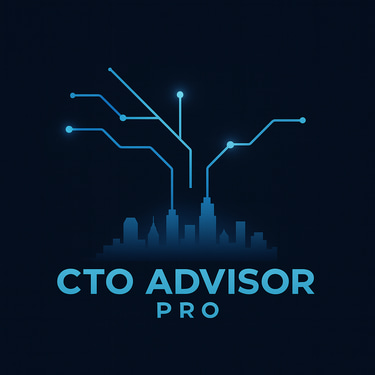Open Source Migration in 2025: The Cost Reality CEOs and CTOs Need to See
If you’ve felt more open-source turbulence in the last 18 months than in the last decade, you’re not imagining it. Relicensing waves, forks, and consolidations have turned yesterday’s “safe” choices into today’s board-level discussions. For growth-stage SaaS, the question isn’t whether to move—but where and at what cost. This post breaks down what’s changed, what it really costs to migrate, and how to make the math work in your favor.
10/4/20255 min read


Why this is happening now
Three macro shifts are rewriting the cost structure of “open” infrastructure:
License whiplash → forced decisions. High-profile projects changed terms, pushing enterprises to reassess legal exposure and TCO. HashiCorp’s move of Terraform to BSL catalyzed the OpenTofu fork—now maturing rapidly under neutral governance in CNCF with rising contributor velocity and enterprise adoption. That shift reframed infra-as-code as a strategic risk line item rather than a tooling preference. The New Stack+1
Forks with credible support → viable, lower-cost paths. When Redis changed licenses in 2024, the community (backed by the Linux Foundation) launched Valkey under a permissive BSD license. Cloud providers and consultancies have since built migration tooling and offers around it; AWS has even published internal economics for ElastiCache users, showing material cost reductions by switching engine targets. Linux Foundation+2Linux Foundation+2
Vendor instability → continuity risk priced into TCO. The last year offered a wake-up call: even long-standing open-source stewards can hit turbulence. MariaDB’s delisting, restructuring, and strategic shifts created uncertainty that savvy teams now model explicitly as “continuity risk” in platform decisions. Blocks and Files+3Business Wire+3Investing.com+3
Bottom line: governance and licensing are now first-order cost drivers—not just legal footnotes. The “cheapest today” choice is often the most expensive three quarters from now if you misread license trajectory or ecosystem momentum.
What recent migrations are actually costing (and saving)
Let’s translate news into line items your CFO will understand.
1) Cache layer: Redis ➜ Valkey
If you run Redis-compatible caches (managed or self-hosted), Valkey has matured fast and is API-compatible for common use cases. AWS reports up to ~60% cost reduction for ElastiCache users who switch to Valkey, driven by engine pricing, instance right-sizing, and better capacity planning observed in the field. Even if your realized savings are half of that, it’s a six-figure swing for many Series B/C footprints. Amazon Web Services, Inc.
The bigger win is license certainty under BSD, which removes downstream “competing use” ambiguity and externalizes less legal review overhead in your supplier chain. The Linux Foundation’s stewardship of Valkey keeps that future predictable. Linux Foundation
Migration cost buckets you should expect:
Environment parity testing (1–2 sprints)
Load/perf benchmarks at P95/P99
Compatibility validation for modules/scripts
Rollback plan + dual-write or blue/green window
Net-net for most SaaS: a 6–10 week effort with a 3–8 month payback—often faster if you are on managed Redis and can flip engine types inside your current provider.
2) IaC layer: Terraform ➜ OpenTofu
The cost here is less about code churn and more about organizational choreography. Enterprises that published their playbooks (notably Fidelity) emphasize that the migration is tractable at scale when approached as a governance program—state inventory, phased cutovers, golden-path modules, and enablement—rather than a wholesale rewrite. If you quantify internal engineering hours, the “one-time tax” is typically offset by eliminating BSL-related legal reviews for every new product or vendor integration and by maintaining community-driven velocity without licensing constraints. Harness.io+2The New Stack+2
Expect:
Discovery & state audit (all workspaces/stacks)
Provider/module parity checks; pinning versions
CI/CD updates and policy as code validation
Enablement (docs, workshops, PR templates)
Payback shows up in reduced legal friction, faster provider adoption, and less vendor risk exposure. If your infra team ships weekly, shaving even a day of delay per quarter due to licensing/legal ambiguity pays for the move.
3) RHEL/CentOS economics without forklift moves
Many teams still incur high RHEL subscription costs purely for “support comfort.” SUSE’s multi-Linux support (formerly Liberty Linux) now offers a credible way to cut support bills while staying on familiar RHEL-compatible footprints, plus tooling to “liberate” estates without mass replatforms—this matters if you’re avoiding a total distro migration but still want cost pressure. The New Stack+2SUSE+2
4) Databases: Oracle ➜ PostgreSQL
This is the perennial budget unlock. New analyses in 2025 keep landing on similar conclusions: once you account for licensing, hardware efficiency, and operational agility, enterprises can see 50–75% TCO reduction—assuming you plan for performance parity and mitigate migration risks (schema translation, PL/SQL refactors, and operational tooling). Recent case studies continue to argue that delaying the move compounds cost and technical debt, not the other way around. Data Patrol Technologies+2OptiSol+2
The real number depends on:
Feature parity gaps (e.g., RAC, partitioning, advanced compression)
Latency/throughput requirements under peak load
Your appetite for managed Postgres variants vs. DIY
The hidden costs most teams miss (and how to control them)
License ambiguity reviews. Every ambiguous clause your lawyers have to parse (e.g., “competing use”) can add weeks of delay to product launches. Normalize this into your TCO: hours × blended legal rate per quarter. Open, neutral governance (CNCF/LF) reduces that overhead materially. The New Stack+1
Provider/module ecosystem drift. In the IaC world, you must track provider parity and module currency. Treat this like a supply chain: assign ownership, version windows, and deprecation budgets. Public signals show OpenTofu’s ecosystem and contributor base growing healthily, which lowers long-term maintenance risk. InfoWorld
Continuity risk premiums. Financial instability at a steward (or abrupt strategy pivots) is a real cost. Price in contingency budgets for exit paths (data portability, compatible forks, support substitutes). The MariaDB storyline over 2024–2025 is a reminder: continuity plans are cheaper to design before you need them. Business Wire+2Investing.com+2
Benchmarking debt. Too many migrations skip disciplined P95/P99 benchmarks and then “pay later” in incident budgets. Build a minimal reproducible perf harness early; it’s the cheapest insurance you’ll buy.
A pragmatic 6-step playbook to make the math work
Map costs to licenses, not just SKUs. Build a ledger that ties each component to its license, steward, and governance home. Flag anything with recent changes or non-OSI terms. (Examples in 2024–2025: Terraform→BSL, Redis→RSAL/SSPL.) InfoWorld+1
Prioritize “quick ROI” surfaces first.
Caches: evaluate Valkey engine migrations for ElastiCache or self-hosted clusters. The elasticity + pricing deltas often deliver sub-year ROI. Amazon Web Services, Inc.
IaC: migrate Terraform state to OpenTofu in phases, starting with low-blast-radius stacks. Use enterprise playbooks (e.g., Fidelity’s) as a template. Harness.io
Convert “support comfort” to competitive bids. If you’re paying top-tier for RHEL support but running mostly commodity services, pit multi-Linux support offerings against your current bill to create immediate savings without reimaging everything. SUSE
Design continuity options before the board asks. For every critical component, document at least one license-stable exit path (e.g., Valkey for Redis, OpenTofu for IaC, community Postgres for Oracle workloads). Keep a 90-day drill plan on the shelf. Linux Foundation+1
Instrument ROI with real workload telemetry. Set a baseline (throughput, tail latency, error budgets, unit cost per transaction). Your finance partners don’t need anecdotes; they need graphs that survive audit.
Change management beats heroics. Treat migrations like product launches: training, internal FAQs, module registries, paved-paths. The fastest migrations we see invest more in enablement than in last-minute firefighting. (Again, note the enterprise OpenTofu case studies.) Harness.io
The executive take
Savings are real and near-term. Cache engine swaps to Valkey can deliver double-digit percentage savings this quarter with minimal code change, especially on managed services. Amazon Web Services, Inc.
Governance reduces future surprises. Moving off ambiguous or restrictive licenses pays back in fewer slowdowns, fewer legal reviews, and a steadier vendor roadmap. OpenTofu’s CNCF home is a strong example. The New Stack
Continuity risk is a budget line item. The last year’s turbulence proves it. Model it, mitigate it, and buy optionality with forks and multi-vendor support strategies. Business Wire+1
For growth-stage companies heading toward Series C, this is not just an engineering topic; it’s a financing strategy. Demonstrating that you can cut 30–60% of waste in key layers while reducing license exposure and continuity risk speaks directly to investor confidence and runway discipline. Your job isn’t to pick “open source” for ideology—it’s to design an open, governable, and cost-efficient platform that compounds advantages quarter after quarter.
If you’d like a structured way to quantify this for your board pack, I use a three-week Open Source Cost & Continuity Assessment that yields (1) a license/governance heat map, (2) a migration ROI plan by surface (cache, IaC, OS, database), and (3) a 90-day execution play with measurable KPIs. Reach out and we’ll model your numbers against these 2025 realities.
Let's chat!

We respect your privacy. Your information will never be shared.
Expert Advice. Guaranteed Results. No fluff.
Fractional CTO Support | CTO Advisor Pro
20+ Years | $1.2B+ in Value Delivered | 250+ Clients
Transform
contact@ctoadvisorpro.com
© 2025. All rights reserved.
Reston, Virginia, USA
